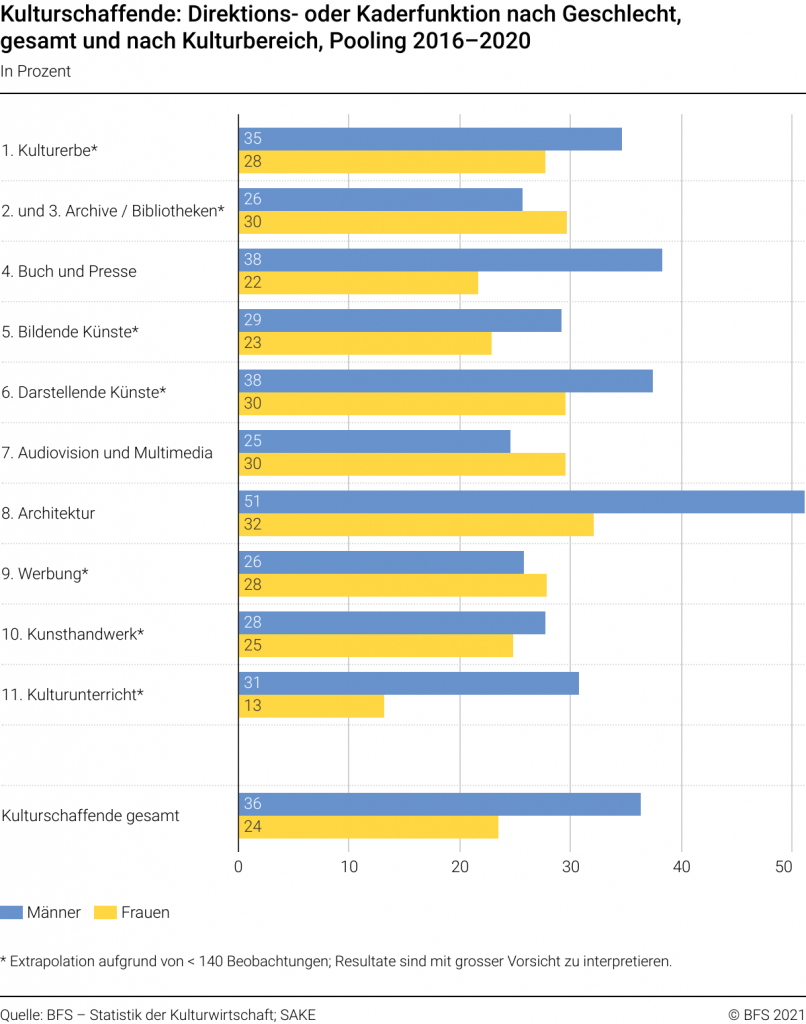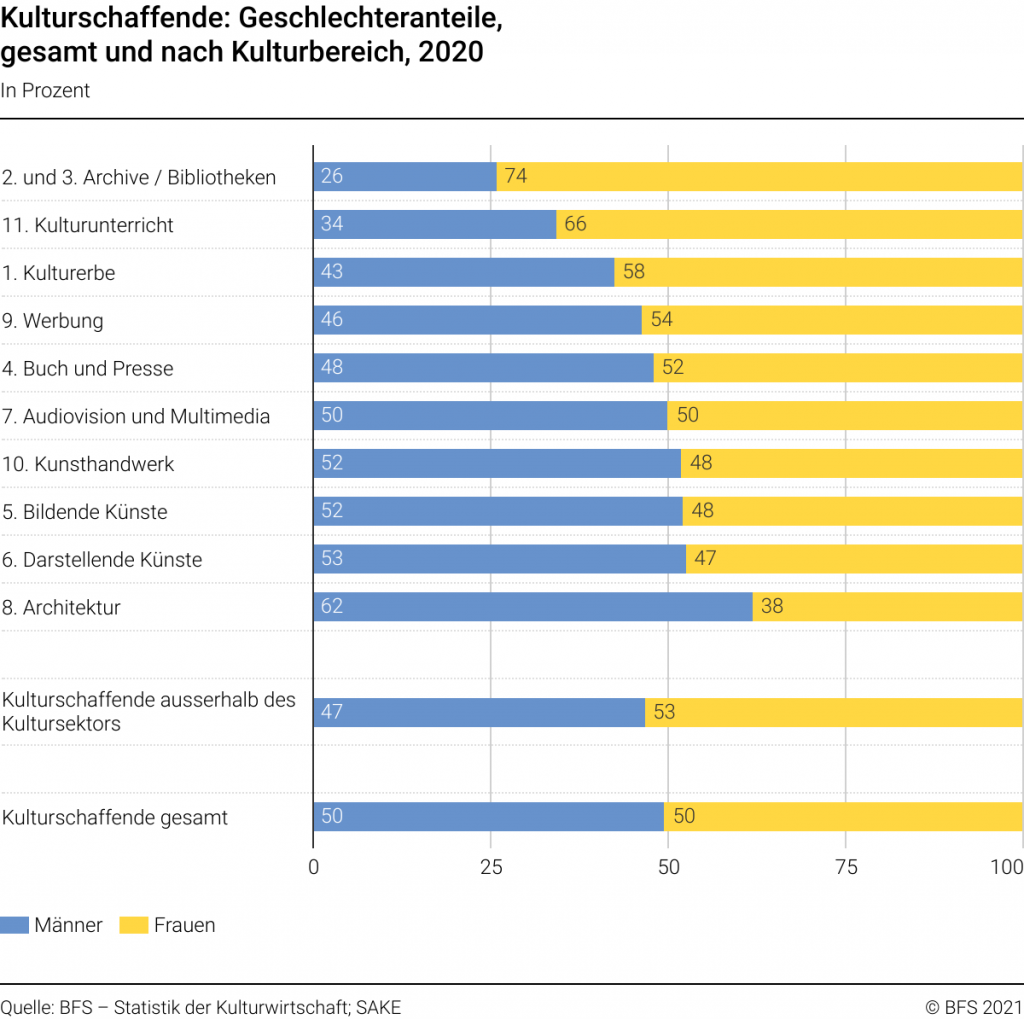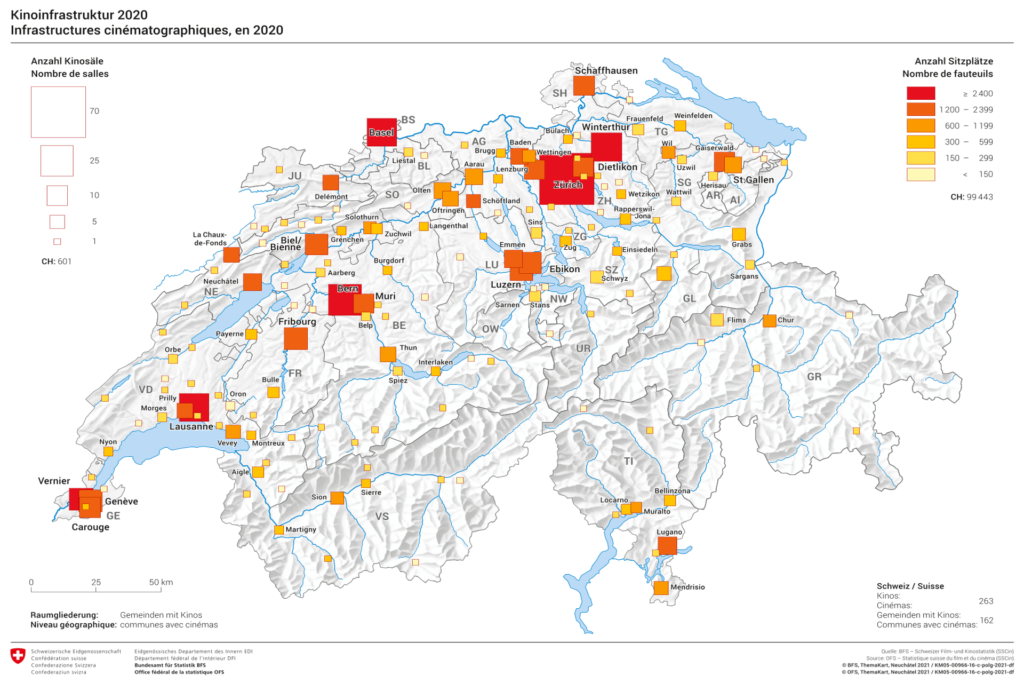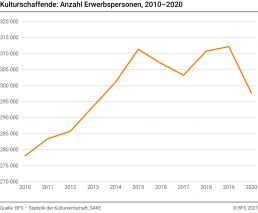In 2020, the number of cultural workers down 5 percent
Workers engaged in culture fell from 312,000 recorded in 2019 to 298,000, penalizing women, part-time contracts and rural areas
During the COVID-19 pandemic in 2020, the number of cultural workers fell 4.7 percent from the previous year. Women and cultural workers with part-time jobs were hit the hardest by this decline.
Rural municipalities experienced a contraction nearly three times greater than that observed in cities.
These are some of the latest findings from the statistics on the cultural economy compiled by the Federal Statistical Office (FSO).
These statistics have been updated on the basis of the latest figures from the Swiss Labour Force Survey (RIFOS) and the Survey on Income and Living Conditions (SILC).
In 2020, there were 298,000 people working as cultural workers in Switzerland, which corresponds to a decrease of 4.7 percent compared to 2019, when there were 312,000. This is the largest decline since 2010.
How important is tourism to Lucerne’s economy?

Until the year before, average growth of 1.3 percent
The contraction noted in both 2016 and 2017 was significantly smaller. Until 2019, however, the average number of cultural workers had grown by 1.3 percent per year.
If we look at employed cultural workers, i.e. active persons excluding those who are unemployed according to the definition of the International Labor Organization (ILO), the decrease was even 5.2 percent.
The trend is thus much more pronounced than for the total employed resident population in Switzerland (-0.2%) and is about the same as for the hotel and restaurant industry (-5.1%).
For persons employed in cultural occupations in the cultural sector (e.g. musician in an orchestra), the decline was fairly small (-1.8 percent), but for non-cultural occupations in the cultural sector (e.g. bookkeeper in a theater) the decline of -6.0 percent was much more pronounced, and for cultural occupations outside the cultural sector (e.g. graphic designer in a bank) the decline was even greater at -7.8 percent.
At the Nidwalden Museum stories of mercenaries and military exploits

Increase in unemployed people among cultural workers
The proportion of unemployed cultural workers, as defined by the ILO, increased by 0.6 percentage points (from 3.2 percent in 2019 to 3.8 percent in 2020), thus more sharply than observed for the total working population (+0.4 percentage points; from 4.4 percent to 4.8 percent).
The increase in the number of unemployed persons was highest for cultural occupations outside the cultural sector (+1.0 percentage points).
In the annus horribilis of cinema, Swiss films save themselves

Some groups were most affected by COVID.
Between 2019 and 2020, the number of cultural workers decreased more among women than men (-4.8 percent vs. -4.5 percent), and the decrease was more pronounced among Swiss cultural workers than among foreign cultural workers (-4.9 percent vs. -3.7 percent).
ùIn addition, cultural workers with full-time jobs (-3.1 percent) were slightly less affected than those with part-time jobs (-6.3 percent for employment grades of 50-89 percent and -8.5 percent for grades below 50 percent).
Cultural workers who have been in their jobs for a year or less (-15.2 percent) were also hit by the decline more heavily than those employed for a longer period of time (-3.4 percent). A very large decline was seen for self-employed workers in a cultural profession outside of the cultural sector: between 2019 and 2020, their numbers declined by 17.2 percent.
Swiss monuments? A “hidden” treasure to be exploited…

Large regional differences: Zurich and the Northwest least affected
In urban areas, the number of active persons working in the cultural sector fell by 4.4 percent, while in rural municipalities the decline was almost three times greater (-12.4 percent).
The breakdown by Major Region shows that the Lake Geneva region (-6.2 percent), the Espace Mittelland (-6.3 percent) and especially Ticino (-11.0 percent), Eastern Switzerland (-12.9 percent) and Central Switzerland (-13.0 percent) were more affected than Northwestern Switzerland (+0.3 percent) and Zurich (+3.6 percent).
The latter is the Great Region in which the number of cultural workers had increased by far the most between 2010 and 2019 (+20.9 percent).
Damian Elsig new head of the Swiss National Library







